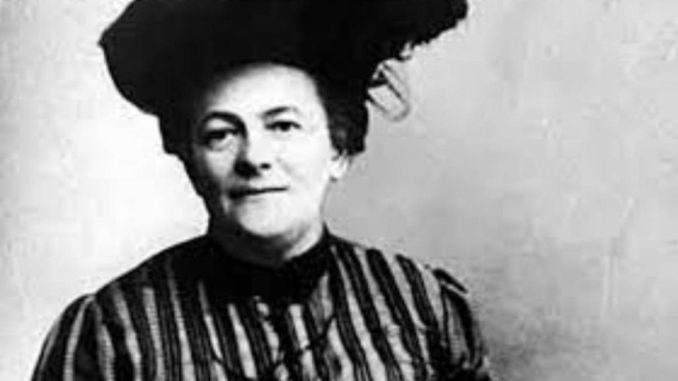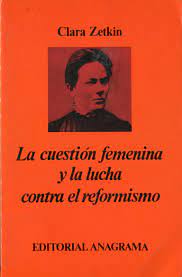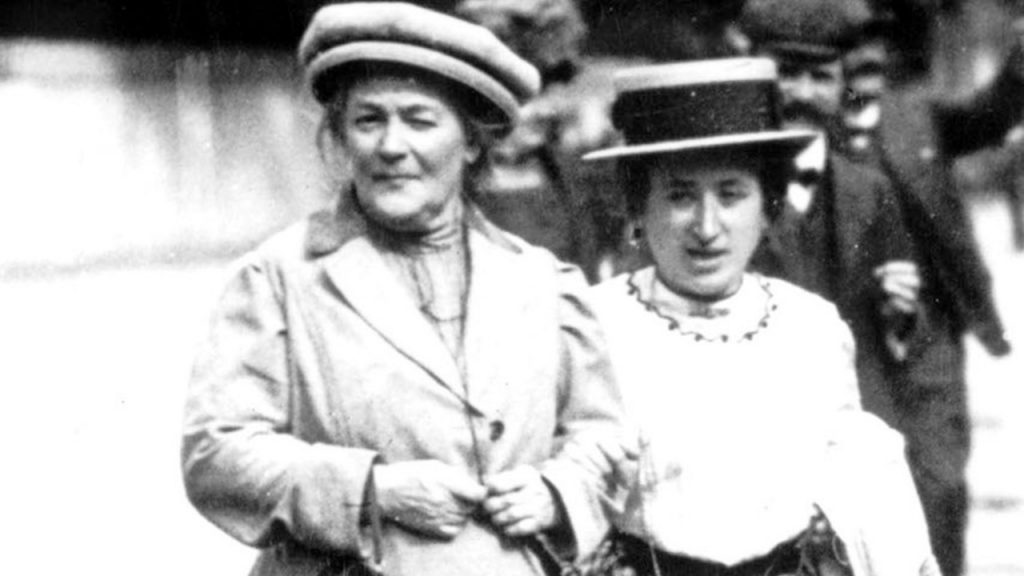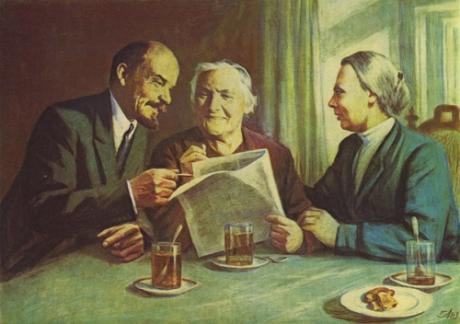
By Caro Dome
Pioneer of the organization of working and socialist women. Journalist, teacher, politician, militant, fierce organizer of the revolution. Founder of the Second International and opponent of the social-democratic leadership when it supported the First World War. She promoted the Spartacus League and the formation of the German Communist Party, playing a fundamental role in the history of socialism and women’s movement.
A biography is insufficient…
Clara Zetkin lived between two centuries. She was born on July 5, 1857 in the German city of Wiedenau (Saxony) and died on June 20, 1933 in Moscow. She became a member of the Socialist Workers’ Party of Germany (later the German Social Democratic Party, SPD) at the age of 20, at a time when women were forbidden to participate in politics. In 1882 she went into exile in Zurich, fleeing Bismarck’s anti-socialist laws, and then to Paris, where she lived with her children and her husband, Ossip Zetkin. They stayed in a small room in Montmartre, a neighborhood of artists and intellectuals, where Clara obtained further education. From that moment she made contact with Marxist leaders of the French labor movement, among them Jenny and Laura Marx (Karl’s daughters), Paul Lafargue and Jules Guesde, and later played an important role in the founding of the Second International.
In 1889, during the July 19 session of the Founding Congress of the Second International held in Paris, Clara wrote:
“We do not believe that for our full emancipation neither our admission into the system of the so-called free market, nor an equal access to education (although both demands are natural and just), nor the conquest of political rights will suffice. Countries that have granted universal, free and direct suffrage show how little this is worth. If it is not accompanied by economic freedom, the right to vote would be an aimless change. If social emancipation depended on political rights, the social question would not exist in countries with universal suffrage. The emancipation of women, like the emancipation of the whole human race, will only occur within the framework of the emancipation of labor with respect to capital.”
Such positions confronted, on the one hand, suffragism (which, being composed mostly of women of well-to-do social classes, did not have a broader horizon than the conquest of women’s civil and political rights) and, on the other hand, the resistance of the social democratic movement itself to include “the women’s issue” in its program. In this sense, the firmness of Clara’s criteria and positionings were what made her the great organizer of the revolutionary women of her time.

Organizer, socialist, internationalist
After the death of Ossip Zetkin, Clara returned to Germany in 1890, when the SPD was a mass organization. Starting in 1892 Clara edited the journal Die Gleichheit (Equality) and was an active member of the left wing of the party. Together with Rosa Luxemburg they confronted the revisionist theories of Eduard Bernstein, defending the Marxist theses in the Reform or Revolution dilemma.
In 1902 the ban on women’s politics was reformed in Germany: from then on, women had the right to political activity, but as long as they exercised it separately from men; reason for which Zetkin began to organize the women’s section of the SPD. At its head, she organized the International Socialist Women’s Conferences and fought for the right to vote, defining the idea that with bourgeois women it was necessary to “fight together, march separately”. Her line was triumphant, making German Social Democracy the first European political party to include this right in its program.
In August 1907, Zetkin led the First International Conference of Socialist Women. Fifty-eight delegates from 15 countries participated.
According to Zetkin, the conference was “the first step in establishing regular contact between the socialist women of different countries…to increase the strength and ensure the success of the activity and struggle of the women’s movement.” The differences expressed therein found Clara Zetkin and Alejandra Kollontai on the side of the unrestricted defense of women’s suffrage. On the other hand, the reformist Lily Braun was willing to accept “commitments”. Finally, the meeting established an International Secretariat, headed by Zetkin.
The Second International Socialist Women’s Conference took place in Copenhagen in August 1910. It was there that Zetkin proposed establishing an International Working Women’s Day, which was approved by more than 100 delegates from 17 countries. The conference also debated labor rights, education, and the struggle against the ever-approaching war. In 1911, the International Working Women’s Day was celebrated for the first time in Berlin, with more than 30,000 demonstrators. The Third Conference was scheduled for April 1914, but did not take place. The war accelerated events and the European working class found itself divided. The struggle against the imperialist massacre found Zetkin in the vanguard alongside Rosa Luxemburg. Both rejected social democracy’s adaptation to the patriotic crusade and its betrayal of revolutionary internationalism. Together with Karl Liebknecht and Rosa Luxemburg, they formed the Spartacus League and edited the journal The International. In March 1915, Zetkin organized an International Women’s Conference Against the War, attended by 25 delegates from belligerent countries, making it clear that her proposal was still on the agenda.

On the side of the Revolution
For their defense of internationalist principles, both Clara Zetkin and Rosa Luxemburg suffered imprisonment and exile during the war. This led them to join Lenin, Trotsky and other social democratic leaders from different countries, with whom they shared their opposition to the course taken by the majority of social democracy. The war and the imminent outbreak of revolutions had divided social democracy between reformists and revolutionaries. Therefore, when the Russian revolution broke out in 1917, both Clara and Rosa received the news with fervor and actively participated in the German Revolution of 1918, which was finally defeated. On January 29, 1919, just 14 days after Rosa Luxemburg’s assassination, Zetkin became the first woman to speak in the German Parliament, denouncing the Social Democratic government for annihilating the revolution.
That same year, the founding of the Third International, led by Lenin, was the project that set out to break definitively with the reformist elements that had betrayed the working class. There Zetnik deepened her bond with Lenin and led the Communist Women’s International, until its dissolution in 1925. Her dialogues (and polemics) with Lenin on women’s issues are affectionately portrayed in her Memories of Lenin.
During the following years she was part of the Communist Party, although she confronted its Central Committee due to political differences. Then, between 1922 and 1933 she served as a deputy in the Reichstag – although she continued to reside in Moscow. Her poor health isolated her from political life at times, and although she never publicly opposed Stalinism, there are private letters in which she expressed her great discomfort with the Stalinist regime and its persecution of critical thought. Nevertheless, the figure of Stalin can be seen lifting her coffin on the day of her death, in Moscow in 1933.

Theses for propaganda among working women
Lenin commissioned Zetkin to elaborate theses for political work among women. These were to be endorsed at the 3rd Congress of the Communist International. There, Clara pointed out that it was necessary to “admit women as members with identical duties and rights as the rest of the members in the party and in all the proletarian organizations (unions, cooperatives, factory councils, etc.)”, as well as “to combat the prejudices related to women in the masses of the male proletariat, strengthening in the spirit of the male and female workers the idea of the solidarity of interests of the proletarians of both sexes”. Her conviction was based on the idea that political work among women should be “agitation and propaganda by means of deeds” to “awaken the initiative of the working woman, to destroy her lack of confidence in her own forces and, mobilizing them in practical work in the domain of organization and struggle, to teach her to understand by means of reality that every conquest of the Communist Party, every action against capitalist exploitation, is a progress that alleviates the situation of women.” Such theses immortalize her in the history of the struggle for the rights of socialist women and the world working class.
Bibliographical References
-La gran historia del feminismo: De la Antigüedad hasta nuestros días (Spanish Edition): 9788491647423: Auffret, Séverine, Kot, Silvia: Libros
-Su hogar es el mundo entero. Escritos y discursos de Rosa de Luxemburgo y Clara Zetnik. Oscar de Pablo (comp.) Disponible en: http://biblioteca.clacso.edu.ar/clacso/otros/20200413055519/su-hogar-es-el-mundo-entero.pdf
-Clara Zetkin, pionera del movimiento de mujeres socialistas. Revista Contexto y Acción Número 128. Disponible en: https://ctxt.es/es/20170802/Culturas/13944/clara-Zetkin-rosa-luxemburgo-ctxtsocialismo-feminismo.htm).
-A 97 años del Tercer Congreso de la III Internacional. La pelea por dirigir a las masas. Periódico MST, 21 de junio 2018. Disponible en https://mst.org.ar/tag/iii-internacional/
Sources:
https://www.marxists.org/espanol/zetkin/index.htm








